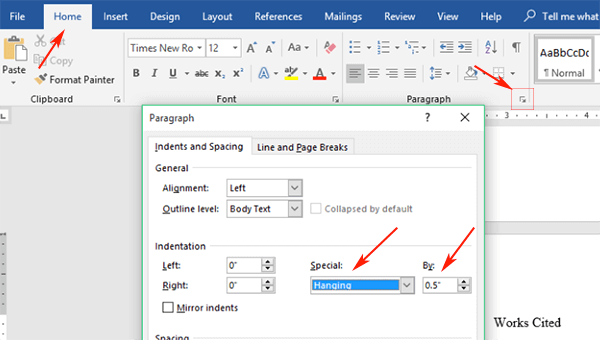

In the context of warrants, the Oxford Companion to American Law defines probable cause as "information sufficient to warrant a prudent person's belief that the wanted individual had committed a crime (for an arrest warrant) or that evidence of a crime or contraband would be found in a search (for a search warrant)". One nonlegal definition of probable cause is, “(A) reasonable ground for supposing that a charge is well-founded” (Merriam-Webster, 2019).
:max_bytes(150000):strip_icc()/how-to-do-a-hanging-indent-in-word-4172856-2-5b613897c9e77c0050089ec3.jpg)
Notable in this definition is a lack of requirement for public position or public authority of the individual making the recognition, allowing for use of the term by citizens and/or the general public. The criteria for reasonable suspicion are less strict than those for probable cause.Ī common definition is "a reasonable amount of suspicion, supported by circumstances sufficiently strong to justify a prudent and cautious person's belief that certain facts are probably true". Probable cause should not be confused with reasonable suspicion, which is the required criteria to perform a Terry stop in the United States of America.

immigration proceedings, the “reason to believe” standard has been interpreted as equivalent to probable cause. The context of the word probable here is not exclusive to community standards, and could partially derive from its use in formal mathematical statistics as some have suggested but cf. Probable in this case may relate to statistical probability or to a general standard of common behavior and customs. The right of the people to be secure in their persons, houses, papers, and effects, against unreasonable searches and seizures, shall not be violated, and no Warrants shall issue, but upon probable cause, supported by Oath or affirmation, and particularly describing the place to be searched, and the persons or things to be seized. The term comes from the Fourth Amendment of the United States Constitution: The standard also applies to personal or property searches. The principle behind the standard is to limit the power of authorities to perform random or abusive searches ( unlawful search and seizure), and to promote lawful evidence gathering and procedural form during criminal arrest and prosecution. It is also the standard by which grand juries issue criminal indictments. Ohio, is when "whether at the facts and circumstances within knowledge and of which they had reasonably trustworthy information sufficient to warrant a prudent in believing that had committed or was committing an offense." One traditional definition, which comes from the U.S. There is no universally accepted definition or formulation for probable cause. In United States criminal law, probable cause is the standard by which police authorities have reason to obtain a warrant for the arrest of a suspected criminal or the issuing of a search warrant.


 0 kommentar(er)
0 kommentar(er)
